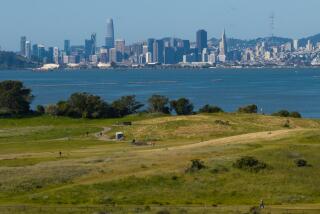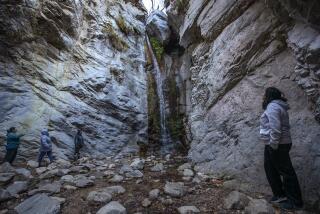Manhattan Project sites expected to become new national park
WASHINGTON -- Sites of the once super-secret Manhattan Project, which led to the creation of the atomic bomb during World War II, could soon become a national park under legislation expected to pass Congress.
The bill would designate sites at Los Alamos, N.M., Oak Ridge, Tenn., and Hanford, Wash., as the Manhattan Project National Historical Park.
But at least one anti-nuclear activist expressed concern that “such a park, if done in a historically inaccurate and biased way, could end up presenting a false picture of the development of nuclear weapons and the monumental costs and ongoing environmental impacts of the Cold War.”
“Given their political influence, those that have profited off nuclear weapons would likely have a disproportionate say in the park’s development and could turn it into some kind of nuclear Disneyland,” said Tom Clements, nonproliferation policy director of the Alliance for Nuclear Accountability.
Scott Miller, senior counsel at the Senate Energy and Natural Resources Committee, responded: “Anyone who has visited Little Bighorn, Manzanar, Andersonville or Little Rock Central High School, for example, understands that these National Park Service sites aren’t about cotton candy and thrill rides.
“The National Park Service’s mission there is to preserve and objectively interpret what is often complex and contentious history, so current and future Americans have a real opportunity for a deeper understanding of these important events,” he added.
Cynthia Kelly, founder and president of the Washington-based Atomic Heritage Foundation, added that the sites will “not glorify the bomb” but “probe the making of the atomic bomb in its historical context of World War II.”
“Just as those who are struggling to interpret the history of the bombing of the World Trade Center on 9/11, coming up with a narrative that is satisfactory to all will be a great challenge,” she added. “Our expectation is that the National Park Service will take an unbiased professional approach and give expression to the diversity of views that shaped this history.”
Sen. Jeff Bingaman (D-N.M.), who introduced legislation this week to create the park, added: “There is no better place to understand history than where it happened.”
Bingaman, chairman of the Energy and Natural Resources Committee, and Rep. Doc Hastings (R-Wash.), chairman of the House Natural Resources Committee, have set hearings for later this month on the measure.
The idea of a Manhattan Project National Historical Park has been discussed for more than a decade. Interior Secretary Ken Salazar last year endorsed the idea, calling the Manhattan Project “one of the most transformative events in our nation’s history.”
Some of the sites are open to the public. Others are near facilities still in use by the Energy Department, which would need to work out a plan with the Park Service to open areas to visitors.
ALSO:
Florida boat captain loses hand to alligator: His fault, some say
Hello, ACLU? KKK wants to adopt Georgia highway, state said no
Japanese tsunami debris proves dangerous: Invasive species found
More to Read
Sign up for Essential California
The most important California stories and recommendations in your inbox every morning.
You may occasionally receive promotional content from the Los Angeles Times.











